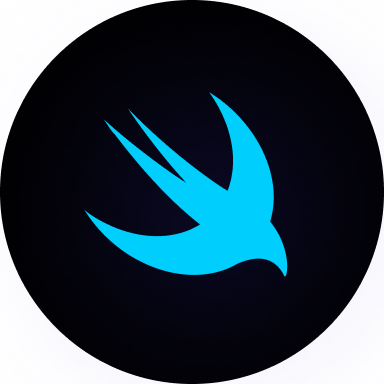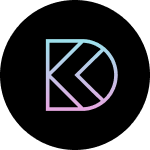React Native Gestures
Add to favorites
Build a cross-platform app with gestures and a persistent login experience
Play video
React Native for Designers Part 2
1
React Native Gestures
28:46
2
Advanced Gestures
16:09
3
Looping the Cards
16:41
4
Animated Transition
16:36
5
Managing Gestures
22:29
6
Input and Keyboard
27:14
7
Lottie Animation Files
21:23
8
Login and Alert
14:43
9
Firebase Authentification
10:51
10
Persistent Data
16:27
11
AsyncStorage with Redux
14:27
12
Publish to Android and iOS
16:22
Diving Deeper into React Native
The first part touched a lot on the UI, animations and light aspect of data, using libraries like Styled Components, Expo, Redux, Apollo and Contentful. As always, courses on Design+Code are all about the workflow and building your app from zero, from the perspective of a designer. The goal is to get you familiar with the platform and the tools, and allow you to collaborate better with engineers.

First, we'll create some gesture interactions within the app and transition nicely to a full card. Since animated assets can save so much implementation time, I believe that it's crucial to learn how to use Lottie files. We'll also learn how create a beautiful sign up and login experience using forms and Firebase authentication. Finally, it'll be time to publish our app to the Android and iOS app stores.
Updating Expo

npm install -g expo-cliExisting Project
If you haven't installed the latest version of the project, you can do so by going to your Downloads folder and run this code in Terminal.
git clone https://github.com/MengTo/react-native-for-designers.git
cd react-native-for-designers
npm install
expo startInstall Git on Windows
Download Git for Windows and double-click on installer file. For every step, click next until completion. Make sure to restart VSCode, go to Integrated terminal (Control + ~) and test this command. This will show a list of commands that you can run with git.
git
git clone https://github.com/MengTo/react-native-for-designers.git
cd react-native-for-designers
npm install
expo startVSCode Extensions
The extensions are the same as Part 1. There is just one tiny change, it's the Material Theme Icons extension that is now separate from Material Theme. You have to install that separately.

Turn off Parameter Hints (optional)
But first, when you type code in VSCode, the hints can get pretty annoying. To turn off those pesky auto-suggestions, go to Settings, search for parameter and turn off Parameter Hints.

Changing Home Screen
When you work with specific screens, you might want to temporarily change your first screen to ProjectsScreen.js. Like this, every time you refresh, it will go directly to the desired screen. To make this change, go to TabNavigator.js and put the ProjectsStack first in the list.
// Line 76
const TabNavigator = createBottomTabNavigator({
ProjectsStack, // First screen
HomeStack,
CoursesStack
});Basic Card
Let's start by changing the background color in ProjectsScreen.js.
const Container = styled.View`
background: #f0f3f5;
`;Let's set up a basic Stateful component for each card. Create a Project.js in the components folder.
import React from "react";
import styled from "styled-components";
class Project extends React.Component {
render() {
return (
<Container />
);
}
}
export default Project;
const Container = styled.View`
width: 315px;
height: 460px;
border-radius: 14px;
background-color: blue;
`;In ProjectsScreen.js, let's include the newly created component.
// Inside Container
<Project />Importing Gestures
In order to start using gestures, we need to import the PanResponder and Animated components from React Native.
// ProjectsScreen.js
import { PanResponder, Animated } from "react-native";Pan State
We'll need to set an Animated state called pan. We're using the ValueXY because it will contact both the x and y positions.
state = {
pan: new Animated.ValueXY()
};Declaring and Enabling Gestures
In order to use gestures, we'll need to configure it from PanResponder. Here, we're declaring a new _panResponder and we're enabling the capture of the swipe gestures by setting onMoveShouldSetPanResponder to true in componentWillMount.
componentWillMount() {
this._panResponder = PanResponder.create({
onMoveShouldSetPanResponder: () => true,
});
}Gesture Events
For swipe gestures, we have access to a bunch of events. Typically, there are 3 main ones:
- When the user starts swiping (onPanResponderGrant). Here, we can use this event to start a background animation, or a color change.
- When the user is swiping (onPanResponderMove). This is useful for moving the card during drag since we get direct values to apply to the card.
-
When the user releases (onPanResponderRelease). We'll be using this event to return the card to its initial position after release. We can also do things like drop the card depending on positioning.
onPanResponderGrant: (e, gestureState) => { // We'll take care of this later. },This will make the card move as you swipe. Since we're using Animated values, we have to Animated to change the states. In this case, we're changing the x and y position.
onPanResponderMove: Animated.event([ null, { dx: this.state.pan.x, dy: this.state.pan.y } ])
When released, you want your card to come back to its initial position. We're using Animated.spring to give a nice bounce effect.
onPanResponderRelease: () => {
Animated.spring(this.state.pan, { toValue: { x: 0, y: 0 } }).start();
}Apply Animated Wrapper
We need to apply the Animated properties to our Card, so we'll wrap it inside an Animated.View where we can add the style properties. Also, we're applying all the arguments from _panResponder that we declared earlier. The triple dots signifies that it's a list of parameters applied to the components.
<Animated.View
style={{
transform: [
{ translateX: this.state.pan.x },
{ translateY: this.state.pan.y }
]
}}
{...this._panResponder.panHandlers}
>
// <Project />
</Animated.View>Project Styling
Let's apply the rest of the styling for our Card in Project.js, along with props. This will allow us to have unique props for each card.
import React from "react";
import styled from "styled-components";
class Project extends React.Component {
render() {
return (
<Container>
<Cover>
<Image source={this.props.image} />
<Title>{this.props.title}</Title>
<Author>by {this.props.author}</Author>
</Cover>
<Text>{this.props.text}</Text>
</Container>
);
}
}
export default Project;
const Container = styled.View`
width: 315px;
height: 460px;
border-radius: 14px;
background-color: white;
box-shadow: 0 10px 20px rgba(0, 0, 0, 0.15);
`;
const Cover = styled.View`
height: 290px;
border-top-left-radius: 14px;
border-top-right-radius: 14px;
overflow: hidden;
`;
const Image = styled.Image`
width: 100%;
height: 290px;
`;
const Title = styled.Text`
position: absolute;
top: 20px;
left: 20px;
font-size: 24px;
font-weight: bold;
color: white;
width: 300px;
`;
const Author = styled.Text`
position: absolute;
bottom: 20px;
left: 20px;
color: rgba(255, 255, 255, 0.8);
font-size: 15px;
font-weight: 600;
text-transform: uppercase;
`;
const Text = styled.Text`
font-size: 17px;
margin: 20px;
line-height: 24px;
color: #3c4560;
`;Import Project
Now that the Project component is done, let's import that to the ProjectsScreen.js. We're passing a bunch of props to the first card since that's the only one we're dealing with at the moment.
import Project from "../components/Project";<Project
title="Price Tag"
image={require("../assets/background5.jpg")}
author="Liu Yi"
text="Thanks to Design+Code, I improved my design skill and learned to do animations for my app Price Tag, a top news app in China."
/>Templates and source code
Download source files
Download the videos and assets to refer and learn offline without interuption.
Design template
Source code for all sections
Video files, ePub and subtitles
Videos
ePub
Assets
Subtitles
1
React Native Gestures
Build a cross-platform app with gestures and a persistent login experience
28:46
2
Advanced Gestures
Adding states, data and events to gestures
16:09
3
Looping the Cards
Create a seamless experience with dynamic data and gestures
16:41
4
Animated Transition
Adding a full-screen animation to the cards
16:36
5
Managing Gestures
Enabling and disabling gestures with Redux
22:29
6
Input and Keyboard
Create a login flow with text fields and a submit event
27:14
7
Lottie Animation Files
Use JSON assets for success and loading animations
21:23
8
Login and Alert
Managing the Login modal and showing messages
14:43
9
Firebase Authentification
Making an API connection to Firebase and dealing with the response
10:51
10
Persistent Data
Store your data so that it persists after refresh
16:27
11
AsyncStorage with Redux
Make your persistent data work with Redux
14:27
12
Publish to Android and iOS
Shipping your project to the App Store
16:22
Meet the instructor
We all try to be consistent with our way of teaching step-by-step, providing source files and prioritizing design in our courses.
Meng To
I design, code and write
Meng To is the author of Design+Code. Meng started off his career as a self-taught designer from Montreal and eventually traveled around the world for 2 years as his US VISA was denied. During his travels, he wrote a book which now has 35,000 readers.
39 courses - 184 hours

Build SwiftUI apps for iOS 18 with Cursor and Xcode
In this course, we'll explore the exciting new features of SwiftUI 6 and Xcode 16 for building iOS 18 apps. From mesh gradients and text animations to ripple effects, you'll learn how to create polished, highly custom apps using the latest workflows. We'll also dive into using Cursor and Claude AI for AI-driven coding, helping you start strong and customize your apps.
5 hrs

Create your Dream Apps with Cursor and Claude AI
Learn to build your dream web apps from the ground up using Cursor, Claude AI, and a suite of powerful AI tools. This course covers everything you need, including React for frontend development, Firebase for backend integration, and Stripe for handling payments. You’ll also dive into advanced AI tools like Claude Artifacts, Galileo AI, v0.dev for UI, Ideogram for design generation, and Cursor Composer for full-scale development.
6 hrs

Build a React Site from Figma to Codux
In this course, you'll learn to build a website from scratch using Codux, starting with a Figma template. You’ll master responsive design, collaborate with developers on a real React project, export CSS from Figma using Locofy, set up breakpoints with media queries, add CSS animations, improve SEO, create multiple pages with React Router, and publish your site. By following best practices, you’ll bridge design and development, improve your web design skills.
2 hrs

Create 3D UI for iOS and visionOS in Spline
Comprehensive 3D Design Course: From Basics to Advanced Techniques for iOS and visionOS using SwiftUI
3 hrs

Master No-Code Web Design with Framer
In this free Framer course, you'll learn to create modern, user-friendly interfaces. Start with dark mode and glass designs, then move from Figma to Framer, using vectors and auto layout for responsive websites. Add animations, interactive buttons, and custom components with code. Finally, you'll craft a design system suitable for teamwork or solo projects, all in a straightforward and practical approach.
4 hrs

Build SwiftUI Apps for iOS 17
In this course, we’ll be exploring the fresh and exciting features of SwiftUI 5! As we craft a variety of iOS apps from the ground up, we'll delve deep into the treasure trove that is SwiftUI's user interface, interactions, and animations.
4 hrs

Build Beautiful Apps with GPT-4 and Midjourney
Design and develop apps using GPT-4 and Midjourney with prompts for SwiftUI, React, CSS, app concepts, icons, and copywriting
4 hrs

Build SwiftUI apps for iOS 16
Create animated and interactive apps using new iOS 16 techniques using SwiftUI 4 and Xcode 14
5 hrs

Build a 3D Site Without Code with Framer
Design and publish a responsive site with 3D animation without writing a single line of code
3 hrs

Create 3D Site with Spline and React
Design and code a landing page with an interactive 3D asset using Spline and CodeSandbox
1 hrs

Build an Animated App with Rive and SwiftUI
Design and code an iOS app with Rive animated assets, icon animations, custom layouts and interactions
3 hrs

Build a SwiftUI app for iOS 15 Part 3
Design and code a SwiftUI 3 app with custom layouts, animations and gestures using Xcode 13, SF Symbols 3, Canvas, Concurrency, Searchable and a whole lot more
4 hrs

Build a SwiftUI app for iOS 15 Part 2
Design and code a SwiftUI 3 app with custom layouts, animations and gestures using Xcode 13, SF Symbols 3, Canvas, Concurrency, Searchable and a whole lot more
3 hrs

Build a SwiftUI app for iOS 15
Design and code a SwiftUI 3 app with custom layouts, animations and gestures using Xcode 13, SF Symbols 3, Canvas, Concurrency, Searchable and a whole lot more
4 hrs

React Livestreams
Learn how we can use React Hooks to build web apps using libraries, tools, apis and frameworks
4 hrs

Design Founder Livestreams
A journey on how we built DesignCode covering product design, management, analytics, revenue and a good dose of learning from our successes and failures
2 hrs

SwiftUI Advanced Handbook
An extensive series of tutorials covering advanced topics related to SwiftUI, with a main focus on backend and logic to take your SwiftUI skills to the next level
4 hrs

iOS Design Handbook
A complete guide to designing for iOS 14 with videos, examples and design files
2 hrs

SwiftUI Handbook
A comprehensive series of tutorials covering Xcode, SwiftUI and all the layout and development techniques
7 hrs

Build a web app with React Hooks
Learn how we built the new Design+Code site with React Hooks using Gatsby, Netlify, and advanced CSS techniques with Styled Components.
4 hrs

UI Design Handbook
A comprehensive guide to the best tips and tricks for UI design. Free tutorials for learning user interface design.
2 hrs

Figma Handbook
A comprehensive guide to the best tips and tricks in Figma
6 hrs

SwiftUI for iOS 14
Build a multi-platform app from scratch using the new techniques in iOS 14. We'll use the Sidebar and Lazy Grids to make the layout adaptive for iOS, iPadOS, macOS Big Sur and we'll learn the new Matched Geometry Effect to create beautiful transitions between screens without the complexity. This course is beginner-friendly and is taught step-by-step in a video format.
3 hrs

SwiftUI Livestreams
This is a compilation of the SwiftUI live streams hosted by Meng. Over there he talks and teaches how to use design systems, typography, navigation, iOS 14 Design, prototyping, animation and Developer Handoff.
19 hrs

UI Design Livestreams
This is a compilation of the UI live streams hosted by Meng. Over there he talks and teaches how to use design systems, typography, navigation, iOS 14 Design, prototyping, animation and Developer Handoff.
26 hrs

UI Design for Developers
In this course we'll learn how to use design systems, set up break points, typography, spacing, navigation, size rules for adapting to the iPad, mobile and web versions, and different techniques that translate well from design to code.
3 hrs

Build an app with SwiftUI Part 3
This course was written for designers and developers who are passionate about design and about building real apps for iOS, iPadOS, macOS, tvOS and watchOS. SwiftUI works across all of those platforms. While the code is not a one-size-fits-all, the controls and techniques involved can apply to all platforms. It is beginner-friendly, but it is also packed with design tricks and cool workflows about building the best UIs and interactions.
4 hrs

Build an app with SwiftUI Part 2
This course was written for designers and developers who are passionate about design and about building real apps for iOS, iPadOS, macOS, tvOS and watchOS. SwiftUI works across all of those platforms. While the code is not a one-size-fits-all, the controls and techniques involved can apply to all platforms. It is beginner-friendly, but it is also packed with design tricks and cool workflows about building the best UIs and interactions.
4 hrs

Build a full site in Webflow
Webflow is a design tool that can build production-ready experiences without code. You can implement CSS-driven adaptive layouts, build complex interactions and deploy all in one tool. Webflow also comes with a built-in content management system (CMS) and Ecommerce for creating a purchase experience without the need of third-party tools.
3 hrs

Advanced Prototyping in ProtoPie
ProtoPie is a cross-platform prototyping tool that creates prototypes nearly as powerful as those made with code, with half of the efforts, and zero code. It's perfect for designers who want to quickly experiment with advanced interactions using variables, conditions, sensors and more.
3 hrs

Build an app with SwiftUI Part 1
This course was written for designers and developers who are passionate about design and about building real apps for iOS, iPadOS, macOS, tvOS and watchOS. SwiftUI works across all of those platforms. While the code is not a one-size-fits-all, the controls and techniques involved can apply to all platforms. It is beginner-friendly, but it is also packed with design tricks and cool workflows about building the best UIs and interactions.
4 hrs

React Native for Designers Part 2
React Native is a popular Javascript framework that builds on top of React by using native components to create a real mobile app indistinguishable from one made using Xcode or Android Studio. The main difference with native development is that you get to use CSS, hot-reload, Javascript and other familiar techniques that the Web has grown over the past decades. Most importantly, you're building for both iOS and Android using the same codebase.
3 hrs

React Native for Designers
React Native is a popular Javascript framework that builds on top of React by using native components to create a real mobile app indistinguishable from one made using Xcode or Android Studio. The main difference with native development is that you get to use CSS, hot-reload, Javascript and other familiar techniques that the Web has grown over the past decades. Most importantly, you're building for both iOS and Android using the same codebase.
5 hrs

Design System in Figma
Learn how to use and design a collaborative and powerful design system in Figma. Design Systems provide a shared library of reusable components and guidelines and that will let you build products much faster
3 hrs

React for Designers
Learn how to build a modern site using React and the most efficient libraries to get your site/product online. Get familiar with Grid CSS, animations, interactions, dynamic data with Contentful and deploying your site with Netlify.
3 hrs

Swift Advanced
Learn Swift a robust and intuitive programming language created by Apple for building apps for iOS, Mac, Apple TV and Apple Watch
9 hrs

Learn Swift
Learn Swift a robust and intuitive programming language created by Apple for building apps for iOS, Mac, Apple TV and Apple Watch
4 hrs

Learn Sketch
Learn Sketch a design tool entirely vector-based and focused on user interface design
5 hrs

Learn iOS 11 Design
Learn colors, typography and layout for iOS 8
1 hrs
